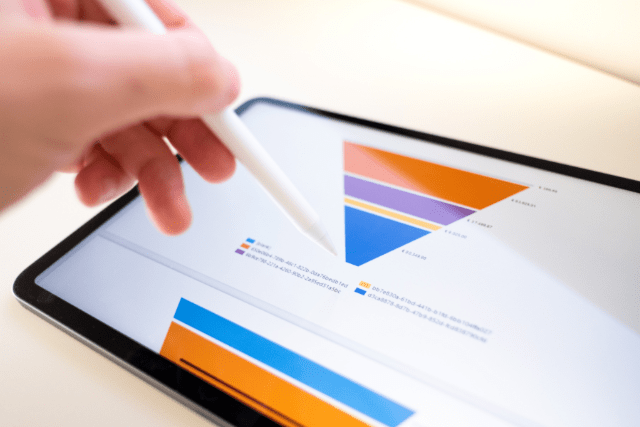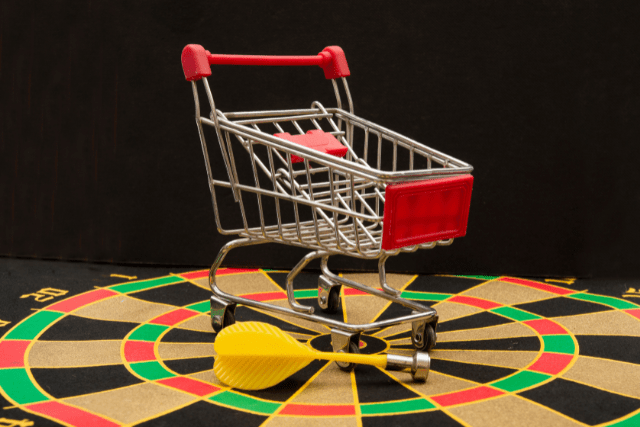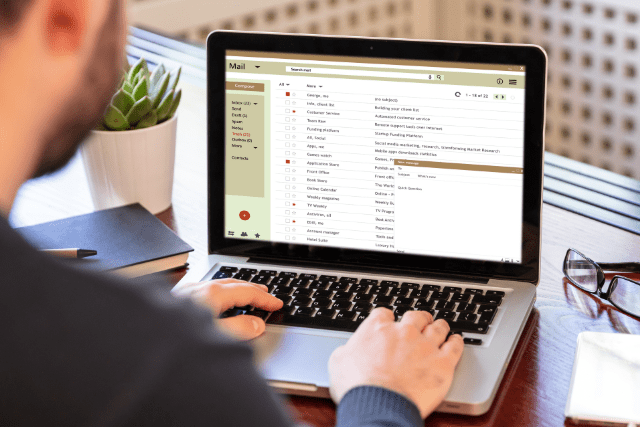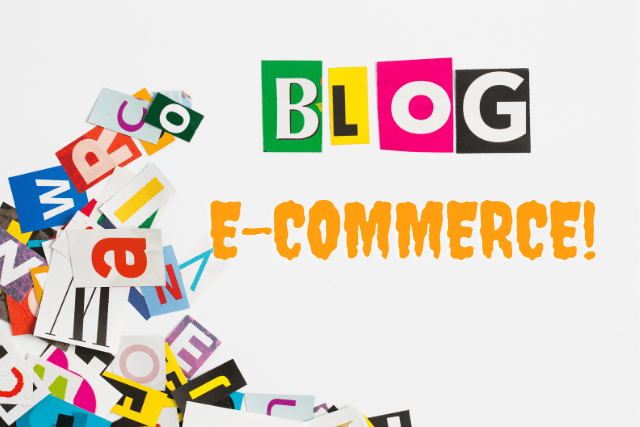Navigating the world of ecommerce is akin to exploring a dense jungle, where every turn could lead to a hidden treasure or a dead end. You’ve got a map—the product you’re passionate about—but to reach the treasure, you need more than just enthusiasm. You need a compass that reliably guides your steps: a high converting ecommerce sales funnel.
You’re laying a trail by identifying your target audience and optimizing your landing pages. Offering irresistible lead magnets and leveraging email marketing is your machete, cutting through the underbrush of competition.
Implementing upselling strategies, analyzing performance, and fostering customer loyalty are the final steps that lead you to the treasure chest of success.
Yet, the journey doesn’t end here. Let’s look at this adventure together to uncover how these steps can transform your path, ensuring no wasted effort and every opportunity is seized.
Key Takeaways
- Pinpoint your target audience through demographic analysis and understand their pains, desires, and the solutions they seek.
- Optimize landing pages with clear, compelling copy, subheadings, bullet points, high-quality visuals, and bold CTA buttons to engage and persuade your target audience.
- Offer irresistible lead magnets that solve a real problem for your audience, capture their attention, and start them on a journey where they feel empowered and liberated.
- Implement upselling strategies to boost revenue by maximizing the value of each purchase, identifying upsell opportunities, understanding customer desires and needs, and using effective pricing tactics.
Table of Contents
Why Is an Ecommerce Sales Funnel Important?
An ecommerce sales funnel is a strategic framework that helps guide potential customers through the buying process, from awareness to conversion. An optimized e-commerce funnel can help you drive the targeted traffic to your products. It is crucial for online businesses as it helps maximize sales and increase customer retention.
Here are several reasons why an ecommerce sales funnel is important:
1. Efficient Conversion Process
An ecommerce sales funnel helps streamline the conversion process by breaking it down into smaller, more manageable steps. It guides potential customers through each stage, ensuring they have the necessary information and incentives to purchase. Businesses can increase their chances of converting leads into paying customers by optimising the conversion process.
2. Targeted Marketing
An ecommerce sales funnel allows businesses to target their marketing efforts more effectively. Businesses can tailor their marketing messages and offers by categorizing potential customers into different funnel stages (e.g., awareness, consideration, and decision). This targeted approach ensures that the right message reaches the right audience at the right time, increasing the likelihood of conversion.
3. Customer Relationship Building
An ecommerce sales funnel allows businesses to build and nurture relationships with potential customers. Businesses can provide value, address concerns, and establish trust by engaging with leads at different funnel stages. This relationship-building process is essential for long-term customer loyalty and repeat purchases.
4. Data-driven Decision Making
An ecommerce sales funnel provides valuable insights into customer behaviour and preferences. By tracking and analyzing data at each stage of the funnel, businesses can identify areas of improvement, optimize their marketing strategies, and make data-driven decisions. This data can also help identify bottlenecks or areas where potential customers drop off, allowing businesses to make necessary adjustments and improve conversion rates.
5. Increased Sales and Revenue
Ultimately, the primary goal of an ecommerce sales funnel is to increase sales and revenue. Businesses can maximise their chances of closing sales by guiding potential customers through a well-defined conversion process. Moreover, by nurturing relationships and providing a positive customer experience, businesses can increase customer lifetime value and encourage repeat purchases, further boosting revenue.
6. Improved Customer Experience
An ecommerce sales funnel focuses on providing a seamless and personalized customer experience. By understanding the needs and preferences of potential customers at each stage of the funnel, businesses can deliver relevant content, personalized recommendations, and targeted offers. This enhances the overall customer experience, increasing customer satisfaction and loyalty.
In short, by implementing an effective sales funnel, businesses can maximize online success and achieve long-term growth.
Different Stages of an Ecommerce Sales Funnel
When constructing a sales funnel for an ecommerce store, ecommerce businesses must guide visitors through stages that take them from being completely unaware of your brand to advocating loyal customers and generating repeat purchases.
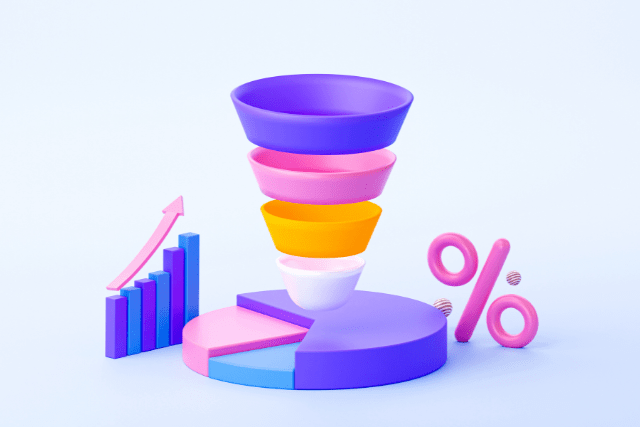
The Awareness Stage
This is the top of the sales funnel. It focuses on introducing your ecommerce brand and products to as many potential new customers as possible through broad targeting methods. Tactics include driving external traffic to your ecommerce website via SEO optimization, PPC ads, email campaigns, affiliate promotions and social media marketing. Messaging spotlights the problem solutions of your products rather than specific product details.
The website homepage experience is crafted to orient new visitors. Email sign-up popups may offer lead magnets like discount coupon codes in exchange for contact details.
The Interest Stage
It seeks to capture the attention of website visitors and direct it towards intrigue and consideration of specific products you sell. This is achieved by in-depth and benefit-focused product descriptions, high-quality visual assets like photographs, customer testimonials that generate trust, comparison charts contrasting your product with others, and potentially free samples or trial versions. The goal moves towards nurturing site visitors into qualified sales leads ready to purchase.
Arriving at the Desire Stage
It involves employing limited-time promotions or exclusivity messaging to establish scarcity and urgency that motivate leads to want to complete the purchase. Bundled pricing packages and subscription models add value.
Retargeting visitors who previously browsed with customized ads and emails keeps your brand at the top of their minds after they leave your website. This further closes the gap between interest and imminent order placement.
Delivering a streamlined Conversion Stage
It allows visitors who now desire ownership of your products to finalize the purchase with minimum friction. Clear calls-to-action, simple and intuitive checkout processes, multiple reliable payment options, and assurances like encryption and guarantee badges foster trust in transacting. Post-purchase upsells of complementary products increase order values after completion via dynamic flows.
Retention Stage
Beyond the initial sale, the Retention Stage leverages confirmation emails, rewards programs, personalized recommendations and easy re-ordering to maintain the new customer relationship for repetitive sales.
Reviews may be requested to utilize for social proofing. Successful ecommerce funnels guide visitors through each specialized stage while continuously testing and optimizing elements within each for improved conversions.
7 Steps to Build a High Converting Ecommerce Sales Funnel
Identify Your Target Audience
Before you can craft an effective ecommerce sales funnel, it’s crucial to pinpoint exactly who you’re trying to reach. You’re not just throwing darts in the dark but honing in on your target with precision and intent. Identifying your target audience isn’t about restricting your freedom but liberating your strategy. The key unlocks the door to meaningful connections and sky-high conversion rates.
Dive deep into demographics, but don’t stop there. Understand their pains, desires, and the solutions they’re seeking. This isn’t just about knowing their age or location; it’s about grasping their heartbeat. You’ve got to speak their language, resonate with their dreams, and address their fears. It’s your roadmap to creating content that captivates, offers that compel, and messages that motivate.

Optimize Your Ecommerce Landing Pages
Transform your landing pages into conversion powerhouses by ensuring every element is strategically designed to engage and persuade your target audience. It’s about crafting spaces that resonate, compel, and ultimately convert. Here’s how you can start:
Leverage Clear, Compelling Copy
- Headlines: Grab attention with headlines that speak directly to the benefits your audience seeks.
- Subheadings and Bullet Points: Break down key information to make it understandable and understandable.
Design for Engagement
- Visuals: Use high-quality images and videos that reflect the product’s premium nature and user experience.
- CTA Buttons: Make them bold and clear, with action-oriented text that drives clicks.
Offer Irresistible Lead Magnets
Consider implementing irresistible lead magnets that effortlessly capture your audience’s interest to skyrocket your conversion rates. Lead magnets are your secret weapon; they’re not just freebies but valuable assets that solve a real problem for your audience, making them feel understood and cared for. It’s about giving them a taste of liberation, showing them a path away from their current frustrations towards a solution that feels almost too good to be true.
| Emotion | Before the Lead Magnet | After the Lead Magnet |
|---|---|---|
| Curiosity | “I wonder if this could work for me?” | “This is exactly what I’ve been searching for!” |
| Relief | “I’m overwhelmed with options.” | “Finally, something that makes sense!” |
| Empowerment | “I don’t know where to start.” | “I have the tools to take action now.” |
Crafting lead magnets that evoke such transformations requires insight into your audience’s deepest desires and pain points. Offer them something that captures their attention and promises and delivers a taste of the freedom they’re seeking.
Whether it’s an exclusive guide, a discount code, or a free trial, make it so compelling that opting in becomes a no-brainer. Remember, the goal is to start a journey with you where they feel empowered and liberated.
Leverage Email Marketing (Best Ecommerce Marketing Strategy)
Once you’ve captivated your audience with irresistible lead magnets, it’s time to deepen that connection through targeted email marketing. This isn’t just about sending emails; it’s about creating a personal and liberating dialogue.
Your audience craves freedom from generic messages, freedom to choose what resonates with them, and freedom to engage with your brand on their terms.
Here’s how you can give them that:
Personalize Your Messages
Leveraging customer data like names and past purchase details enables more targeted, personalized communication that resonates better. Recommending specific complementary products to return customers based on their order history demonstrates understanding while celebrating milestone dates annually with exclusive special offers fosters deeper connections through VIP treatment.
Tactics incorporating identity specifics rather than generic outreach prove more effective at nurturing ongoing relationships, encouraging re-engagement and driving future conversions through relevance. Unlike other faceless transactions, shoppers want to feel seen, known and cared for.
Specific examples include calling out top customers by name in thank you emails after each purchase or triggering coupon codes on their first customer anniversary. Personalization should infuse message tone as well as actual content offers.
Segment Your Audience
Not all potential customers share the same needs or motives. Group together website visitors, leads and existing buyers who share common behaviours like interests in your niche, past purchases in a collection or preference for certain channels like email.
Create differentiated ecommerce funnel experiences and dedicated email nurture tracks for each user segment. Those demonstrating greater affinity warrant VIP treatment through more exclusive early access to upcoming inventory or special sales.
Audience segmentation powered by analytics reveals which current sub-groups drive inordinate value. Doubting down on converting each niche via tailored outreach is advisable over one-size-fits-all approaches. Not everyone will connect with the same messaging or incentives, so diversify what you promote to whom for better response rates.
Ongoing testing also determines what resonates best per grouped segment for continuously improved future conversions through relevance.

Implement Upselling Strategies
Boosting your ecommerce sales funnel isn’t just about getting more customers; it’s also about maximizing the value of each purchase. Identifying upsell opportunities allows you to offer related products or upgrades that your customers can’t resist.
With the right pricing tactics, you’ll enhance your average order value and improve customer satisfaction by matching them with the perfect solutions.
Identify Upsell Opportunities
Identifying upsell opportunities within your ecommerce sales funnel can significantly increase your average order value, offering a straightforward path to boosting revenue. You’re not just selling more; you’re providing additional value to your customers, making every transaction more meaningful.
Here’s how you can pinpoint those golden opportunities:
- Analyze customer behaviour and preferences
- Look at past purchases to predict future needs
- Survey customers to understand their desires
Best Pricing Tactics for E-commerce Sales Funnel
After pinpointing upsell opportunities by understanding customer behaviour and desires, it’s crucial to master effective pricing tactics to maximize the impact of your upselling strategies. You’re not just selling a product but guiding your customers towards choices that enhance their experience and satisfaction.
Implement tiered pricing models to offer visible value that customers can’t ignore. It’s about creating a perception of savings and exclusivity with each upgrade. Use psychological pricing, making the most of those just-below numbers ($19.99 instead of $20) to make the upsell seem more accessible.
Remember, your goal is to make customers feel empowered and smart about their choices. By carefully structuring your pricing, you’re not manipulating; you’re facilitating a more rewarding shopping experience they’ll thank you for.

Analyze and Test Performance for Effective Ecommerce Sales Funnel
To truly maximize your ecommerce sales funnel’s potential, you’ve got to analyze and test its performance relentlessly. By optimizing performance metrics, you’ll pinpoint exactly where your funnel excels and where it needs improvement.
Implementing A/B testing allows you to experiment with different strategies, ensuring you’re always a step ahead in enhancing your funnel’s efficiency.
Optimize Performance Metrics
Optimizing your ecommerce sales funnel’s performance metrics is crucial in maximizing conversions and streamlining your customer journey. This isn’t just about tweaking numbers; it’s about liberating your strategy from the constraints of guesswork and embracing data-driven decision-making. Here’s how you can make it happen:
Analyze:
- Conversion Rates: Identify where prospects drop off and optimize those stages.
- Customer Acquisition Cost (CAC): Lower costs by targeting more effectively.
Test:
- A/B Testing: Experiment with different elements (CTAs, images, copy) to see what resonates.
- Page Load Speed: Faster pages retain more visitors.
Implement A/B Testing
Having explored the critical role of performance metrics in shaping your ecommerce success, it’s time you harness the power of A/B testing to refine and elevate your strategy further. A/B testing isn’t just a tool; it’s your secret weapon in the relentless pursuit of conversion optimization. Imagine two versions of your landing page, email, or ad.
One performs slightly better, nudging your profits upwards, inch by inch. By methodically testing and analyzing the outcomes, you’re not guessing anymore; you’re making informed decisions. It’s about small changes that lead to significant impacts.
Don’t settle for what’s good enough. Challenge your assumptions, test rigorously, and watch your ecommerce funnel transform into a conversion powerhouse. It’s time to break free from mediocrity. Embrace A/B testing, and liberate your potential.
Foster Customer Loyalty for Your Online Store
Cultivating customer loyalty is crucial for ensuring repeat business and fostering a base of dedicated advocates for your brand. It’s not just about making a sale; it’s about creating an experience that resonates so deeply that customers can’t help but return and spread the word.
Personalize the Experience
- Remember their names and preferences. Use customer data to tailor their shopping experience. A personalized email or a recommendation based on past purchases can make all the difference.
- Celebrate milestones. Whether it’s a birthday discount or recognizing a customer’s first anniversary with your brand, these gestures build emotional connections.
Reward Loyalty
- Create a loyalty program. Offer points for purchases, reviews, or social shares that can be redeemed for discounts or exclusive offers.
- Provide VIP treatment. Give loyal customers early access to sales or new products. These perks reinforce their special status and encourage continued loyalty.
Examples of Successful Ecommerce Sales Funnels
Here are some real-world examples of highly successful ecommerce sales funnels:
Dollar Shave Club – This subscription grooming company employs a multi-step funnel to convert visitors: Engaging video → Collect lead info → Free product trial → Auto-ship subscription offer
By offering a viral intro video and irresistible trial, they capture leads and transition them to repeat customers via a frictionless checkout and ongoing delivery model.
MVMT Watches – Using influencer and Facebook ads, MVMT has grown rapidly. Their funnel structure: Ad → Dakota Watch (entry-level) → More Luxury Watch Lines → Cross-sells
Strategically leading visitors to their accessibly priced product builds a desire for ownership. Further upsells after orders are common through retargeting through their CRM.
FabFitFun Subscription Box – The FabFitFun sales cycle utilizes powerful psychology, scarcity and social proof with Subscription Education → Fear Of Missing Out → Sales/Reviews → Checkout Bonuses
Describing the unboxing experience and value of the customizable subscription box entices site visitors to subscribe for the upcoming quarterly shipment to access deals. Reviews and timer countdowns urge action now.
Manscaped – This men’s below-the-belt grooming brand uses humour alongside smart bundles: Funny Video → Perfect Package (product bundle) → Add-ons → Recurring Orders.
Discounts for first orders containing their most popular products incentivize initial conversions while upselling additional speciality items and subscription replenishments increase order values.
Each approach aligns elegantly with the ecommerce funnel methodology for commanding visitor attention, clearly conveying value, and swiftly prompting purchases. Testing and optimizing funnels allows constant conversion improvements.
Tools Required to Build an Ecommerce Sales Funnel
Some of the most essential tools needed to build and optimize a high converting ecommerce sales funnel effectively are:
Ecommerce Website Platform
A robust modular platform like Shopify or BigCommerce serves as the central ecommerce website hub and comes preloaded with many funnel set-ups, management and optimization capabilities. Templates, integrated payment processing, shopping cart flows, and coordination with other tools make an all-in-one system invaluable.
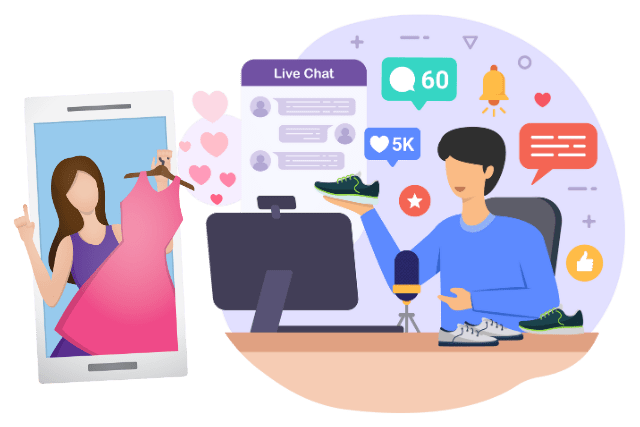
Landing Page/Funnel Builder
Dedicated funnel software like ClickFunnels facilitates crafting custom landing pages and laying out multi-step processes tied into your e-commerce website for specialized funnel flows to control visitor progression. Elements like sticky navigation, dynamic content, progress trackers, differentiated layouts for each step and lead magnets increase conversions.
Email Marketing Integration
Connecting email services like MailChimp, ConvertKit, or Klaviyo adds the capacity to trigger behavioural email workflows sent to subscribers. This enables powerful funnel campaigns for lead nurturing, cart abandonment recapture, and valuable automation to retain customers when purchases occur or returns happen.
Analytics Platform
Actionable visitor and conversion data is provided via Google Analytics, MixPanel or other analytics tools. The insights highlight how leads interact with your funnel to expose areas for testing and optimizing through A/B splits to gain performance improvements over time per page and campaign incrementally.
User Behavior Tracking
Integrating services like HotJar, CrazyEgg, or Mouseflow reveals how visitors navigate through your funnel via heat maps visualizing clicks and scroll depth. Pinpointing usability troubles leads to refinements. Session recordings also evaluate form completion challenges more granularly.
Form Builders
For creating super optimized lead capture, survey and order forms, services like JotForm and TypeForm dynamic field selection logic, mobile-responsiveness and built-in analytics tracking. This improves key conversions at critical process transition steps.
CRM Platform
A unified CRM solution like HubSpot or Zoho seamlessly records all visitor and buying customer data in one centralized view for monitoring behaviours across channels and funnel stages. Tracking churn risks, lifetime value and marketing campaign ROI in one dashboard allows for maximizing retention.
The interconnected use of these technologies provides a comprehensive infrastructure for funnel testing, personalization, data-driven decision-making, and yield optimizations over time.
Frequently Asked Questions
What is an ecommerce sales funnel?
An ecommerce sales funnel guides potential customers through a strategic path that takes them from being aware of your brand to interested leads and finally to completed sales and loyal repeat customers.
What are the main stages of an ecommerce conversion funnel?
The four main phases are 1) Awareness – attracting potential shoppers 2) Consideration – converting site visitors into leads 3) Conversion – turning leads into paying customers 4) Retention – incentivizing repeat purchases with loyalty programs.
How can an ecommerce funnel increase my conversion rates?
Properly structured sales funnels with optimized pages guide visitors towards becoming paying customers through tactics like email collection pop-ups, enticing product descriptions, social proof elements, cart abandonment follow-ups, and special offers at strategic points leading to checkout completion.
What should I include on my ecommerce site to build an effective sales funnel?
Essential pages on an e-commerce site that make up an effective funnel include home and product category pages (awareness), product description pages (consideration), seamless cart and checkout processes (conversion), confirmation pages, and email subscriptions (retention).
How do I optimize my ecommerce funnel for more sales?
Continuously optimize each stage of your sales funnel using A/B testing and analytics data. Perfect funnel elements like site navigation, page load speeds, compelling copy, security badges for trust, calls-to-action placement, responsive design, cart flows, one-click checkouts and special promo codes.
What tools can I use to build a high-converting ecommerce funnel?
Dedicated funnel builder platforms integrate with ecommerce sites, making it easy to create multi-stage sales funnels. All-in-one ecommerce platforms like Shopify also have excellent funnel capabilities. Use analytics software to identify leaks and fine-tune conversions.
What is conversion rate optimization?
Conversion rate optimization (CRO) systematically improves the percentage of website visitors that convert into paying customers. This requires analyzing data to identify leak points in your funnel and flaws hurting conversion performance. Then, those issues can be addressed through iterative testing of optimizations.
Conclusion
Now that you’ve got the blueprint, it’s your turn to transform your ecommerce sales funnel. Start by pinpointing your ideal customers, then make your landing pages irresistible.
Don’t underestimate the power of a compelling lead magnet, and remember, email marketing is your best friend. Upsell wisely, always test and analyze for improvement, and above all, cherish your customers to build lasting loyalty.
Put these steps into action, and watch as your sales soar. Success is in your hands.

